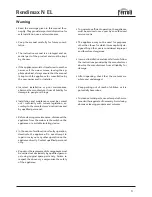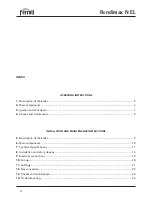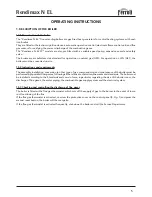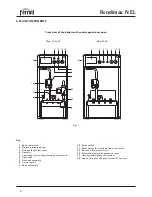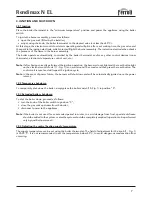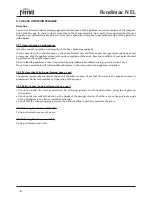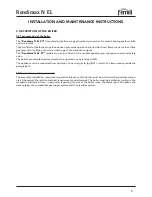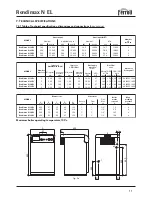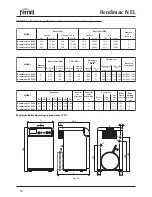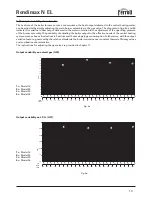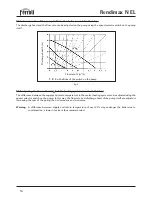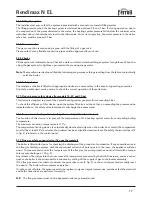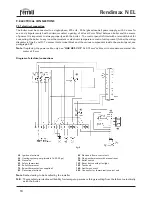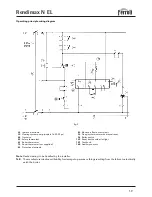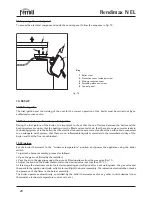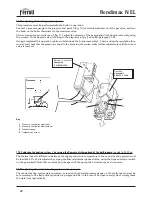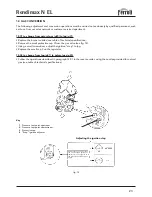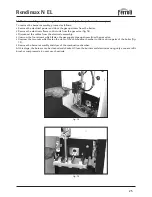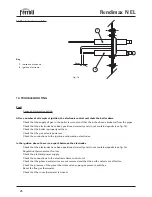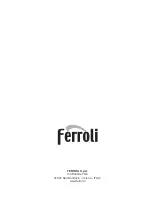
Rendimax N EL
16
8. INSTALLATION AND SAFETY DEVICES
• The boiler must only be installed by specialist companies according to the instructions, requirements and laws
in force
• This boiler must only be used for the application it has been specifically designed for.
Important
This boiler is used to heat water to temperatures below boiling, at atmospheric pressure. The boiler must
be connected to a central heating system compatible with its performance and output rating.
8.01 preliminary operations
The boiler must be installed in a suitable room complaint with the standards and regulations in force. Before con-
necting the boiler, perform the following operations:
• Carefully clean all the pipe work in the heating system to remove any residues or impurities that may compromise
the correct operation of the boiler;
• Check that the boiler is configured for operation with the type of combustible gas available. This is written on
the packaging and on the rating plate;
• Check that the chimney/flue has a suitable draught, is not choked and that there are no discharges inserted
from other appliances, except where the flue has been created to serve a series of appliances, according to the
specific standards and regulations in force. Only after having performed this check can the joiner pipe between
the boiler and chimney/flue be fitted.
• Check any existing flues to make sure they have been carefully cleaned, as any scale flaking off the side walls
during operation may block the passage of the flue gas, creating extremely dangerous situations for the user.
8.02 On-off valves
It is recommended to fit on-off valves between the boiler and the central heating system; these allow the boiler to
be isolated from the heating system, if necessary.
8.03 Boiler room
Warning
This appliance can only be installed and operated in permanently ventilated rooms.
8.04 Connection to the fl ue
The flue connection pipe must be no smaller in diameter than the fitting on the draught diverter. Starting from the
draught diverter, it must follow a vertical course of no less than half a metre. The dimensions and installation of
the flues and the connecting pipes must respect the standards in force.
8.05 Heating system connection
Perform the connections to the corresponding fittings according to the positions indicated in figs. 3a and 3b. The
discharge of the safety valve must be connected to a collection container, to avoid water spilling on the ground in
the event of over-pressure in the central heating circuit.
Note if the central heating supply and return pipes follow a course in which, at some point, air pockets may be
created, an air valve should be installed at the corresponding points.
When the boiler is installed below the level of the central heating system, a “flow-stop” valve should be fitted to
stop the natural flow of water in the central heating system.


